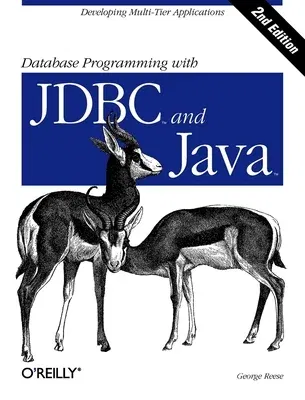George Reese
(Author)Database Programming with JDBC and JavaPaperback, 19 September 2000

Qty
1
Turbo
Ships in 2 - 3 days
In Stock
Free Delivery
Cash on Delivery
15 Days
Free Returns
Secure Checkout

Part of Series
Java (O'Reilly)
Part of Series
Java Series
Print Length
350 pages
Language
English
Publisher
O'Reilly Media
Date Published
19 Sep 2000
ISBN-10
1565926161
ISBN-13
9781565926165
Description
Product Details
Author:
Book Format:
Paperback
Country of Origin:
US
Date Published:
19 September 2000
Dimensions:
22.91 x
18.08 x
2.16 cm
ISBN-10:
1565926161
ISBN-13:
9781565926165
Language:
English
Location:
Cambridge, MA
Pages:
350
Publisher:
Series:
Weight:
562.45 gm